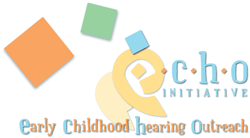Access New Training Resources for Implementing Evidence-based Pure Tone Hearing Screening with Children 3 – 5 Years of Age: An On-Demand Coffee Break Webinar
So much to learn, but how do you fit it all in?
How about this 20 minute, On-Demand webinar!
Are you or your staff responsible for implementing Pure Tone hearing screening for children 3 - 5 years of age? If so, you may not have received adequate training to implement the screening and follow-up process consistent with evidence-based practice recommendations. Being “evidence-based” is more than just using the right type of hearing screening equipment; it is using the equipment in the correct ways, following standardized steps during the screening process as well as adhering to a follow-up protocol if a child does not pass the screening on both ears. Since pure tone screening is not an automated process, there are numerous ways a screener can inadvertently make small mistakes that invalidate the screening. This could result in a failure to identify a child who needs audiological evaluation. Even if you have experience using the Pure Tone method, we strongly encourage you to watch this short webinar and then proceed with the complete training that this webinar overviews.
This webinar will introduce participants to a complete set of free resources that are designed to help ensure that a program's Pure Tone screening and follow-up practices reflect the highest quality evidence-based recommendations. After joining the On-Demand webinar, participants will be able to:
- Describe the importance of having a pediatric audiologist partner to help oversee Pure Tone screening activities and how to locate a partner.
- Access the online tutorials and hands-on practice exercises designed to provide comprehensive preparation for implementing Pure Tone screening.
- Complete the online learning process that will lead to receiving certificates of completion.
- Access additional online resources that help program staff accomplish the day-to-day activities associated with Pure Tone hearing screening including communicating results to parents and health care providers and tracking children through any needed follow-up.
